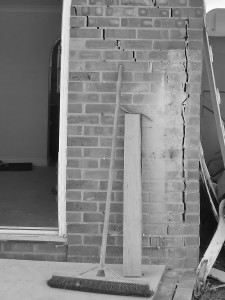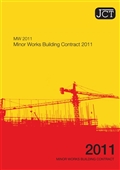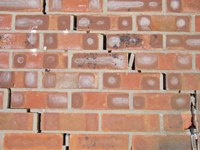Defects that affect the structure of a building are usually caused by the simplest of issues, which are easily remedied with a regular cyclical maintenance programme. The age old adage that prevention is better than cure rings true. The following is a list of the RMA Surveyors Ltd top 5 problems regularly encountered that could be easily prevented.
 1. Keep rainwater goods regularly cleared and maintained. This is one of the simplest practical steps one can make to maintain any property. Safe access should always be factored in, particularly on larger commercial premises. That said the regular maintenance and clearing of rainwater goods will save hundreds, often thousands of pounds in remedying associated defects. We have discovered a dry rot outbreak covering three floors of a four story commercial premises; damaged masonry and staining; water ingress inside the building saturating the concrete floor screed; rotten external timbers and windows; damaged plaster and decorations internally; rusting of steel framing to a prefabricated system built property. All of these defects could have been easily prevented by maintenance of gutters and downpipes. In some cases poor rainwater management can lead to more serious structural damage caused by subsidence, where soil has been eroded away. For a small annual cost such problems could easily be avoided.
1. Keep rainwater goods regularly cleared and maintained. This is one of the simplest practical steps one can make to maintain any property. Safe access should always be factored in, particularly on larger commercial premises. That said the regular maintenance and clearing of rainwater goods will save hundreds, often thousands of pounds in remedying associated defects. We have discovered a dry rot outbreak covering three floors of a four story commercial premises; damaged masonry and staining; water ingress inside the building saturating the concrete floor screed; rotten external timbers and windows; damaged plaster and decorations internally; rusting of steel framing to a prefabricated system built property. All of these defects could have been easily prevented by maintenance of gutters and downpipes. In some cases poor rainwater management can lead to more serious structural damage caused by subsidence, where soil has been eroded away. For a small annual cost such problems could easily be avoided.
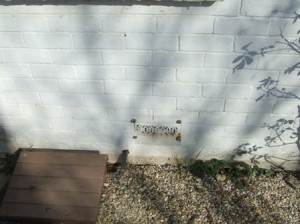 2. Ventilation of buildings. This is a broad ranging subject, but in essence all one needs to do is remember a simple rule that buildings and their materials need to be adequately ventilated (or breath). The typical scenario we find is where suspended timber ground floors are not adequately ventilated. The presence of ventilation grilles on external walls indicates that the floor is likely to be timber and the void below needs to be well ventilated to prevent the accumulation of moisture. Typically solid floor extensions are installed and no provision is made to retain ventilation. This can create unventilated pockets where moisture can accumulate allowing the conditions for wood boring insects larvae (commonly called woodworm) and all kinds of rot to establish. Simply ensuring that ventilation grilles are maintained and not covered over could end up saving you thousands.
2. Ventilation of buildings. This is a broad ranging subject, but in essence all one needs to do is remember a simple rule that buildings and their materials need to be adequately ventilated (or breath). The typical scenario we find is where suspended timber ground floors are not adequately ventilated. The presence of ventilation grilles on external walls indicates that the floor is likely to be timber and the void below needs to be well ventilated to prevent the accumulation of moisture. Typically solid floor extensions are installed and no provision is made to retain ventilation. This can create unventilated pockets where moisture can accumulate allowing the conditions for wood boring insects larvae (commonly called woodworm) and all kinds of rot to establish. Simply ensuring that ventilation grilles are maintained and not covered over could end up saving you thousands.
 3. Masonry repairs are often undertaken without due consideration for what original materials were used. Commonly I find that brickwork gets repointed in a cement mortar that is stronger than the surrounding brickwork. The result of this is that the mortar joints no longer allow water to evaporate and the brickwork begins to retain more water. On solid walled properties this can lead to damp on the internal wall surfaces. It can also mean damage to bricks in cold weather as the surface of the brick can be pushed off by the freeze/thaw cycle. Often repointing work can work itself loose due to expansion and contraction at differing rates with the brickwork and repointing is required far sooner than should be required. Make sure that when you are undertaking external masonry repairs it is done so by a contractor who understands the original construction and the work is correctly specified.
3. Masonry repairs are often undertaken without due consideration for what original materials were used. Commonly I find that brickwork gets repointed in a cement mortar that is stronger than the surrounding brickwork. The result of this is that the mortar joints no longer allow water to evaporate and the brickwork begins to retain more water. On solid walled properties this can lead to damp on the internal wall surfaces. It can also mean damage to bricks in cold weather as the surface of the brick can be pushed off by the freeze/thaw cycle. Often repointing work can work itself loose due to expansion and contraction at differing rates with the brickwork and repointing is required far sooner than should be required. Make sure that when you are undertaking external masonry repairs it is done so by a contractor who understands the original construction and the work is correctly specified.
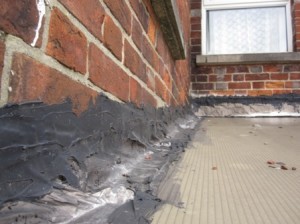 4. Critical junctions between building elements such as chimneys and extensions are often poorly weathered with lead flashings in poor condition or missing altogether. The recent spate of metal thefts has compounded to the issue, as people are becoming increasingly reluctant to replace lead. Opting for cheaper bitumen backed aluminium tape is a temporary solution, but should not be relied upon to form a proper long term weatherproof junction. Where lead flashings are installed the standard of workmanship can often well below par. If you are planning to have any lead work undertaken make sure it is done by an experienced installer who understands the material and follows the industry standard guidance available from the Lead Sheet Association.
4. Critical junctions between building elements such as chimneys and extensions are often poorly weathered with lead flashings in poor condition or missing altogether. The recent spate of metal thefts has compounded to the issue, as people are becoming increasingly reluctant to replace lead. Opting for cheaper bitumen backed aluminium tape is a temporary solution, but should not be relied upon to form a proper long term weatherproof junction. Where lead flashings are installed the standard of workmanship can often well below par. If you are planning to have any lead work undertaken make sure it is done by an experienced installer who understands the material and follows the industry standard guidance available from the Lead Sheet Association.
 5. Finally, external decorations and maintenance of vegetation. Innumerable problems are associated with the simplest of maintenance tasks, namely vegetation management. Ivy climbing up walls may look idyllic but in some cases it can do permanent damage to masonry and cause all manner of associated problems. Careful pruning and maintenance of trees near buildings is also worthwhile especially in drought affected areas as the amount of water taken up by maturing trees can cause subsidence. A simple lick of paint every 5 years to external joinery will prevent costly maintenance of external and internal elements.
5. Finally, external decorations and maintenance of vegetation. Innumerable problems are associated with the simplest of maintenance tasks, namely vegetation management. Ivy climbing up walls may look idyllic but in some cases it can do permanent damage to masonry and cause all manner of associated problems. Careful pruning and maintenance of trees near buildings is also worthwhile especially in drought affected areas as the amount of water taken up by maturing trees can cause subsidence. A simple lick of paint every 5 years to external joinery will prevent costly maintenance of external and internal elements.
The above are simple measures that will save you time, stress and money. If you have a property that requires a detailed cyclical maintenance program, so you can plan and manage your maintenance budgets, or you require more urgent repairs and remediation, then please contact us. Our initial consultations are always free and we would be pleased to provide you with a full quotation based on the level of service you require.
Richard Mountain MRICS
